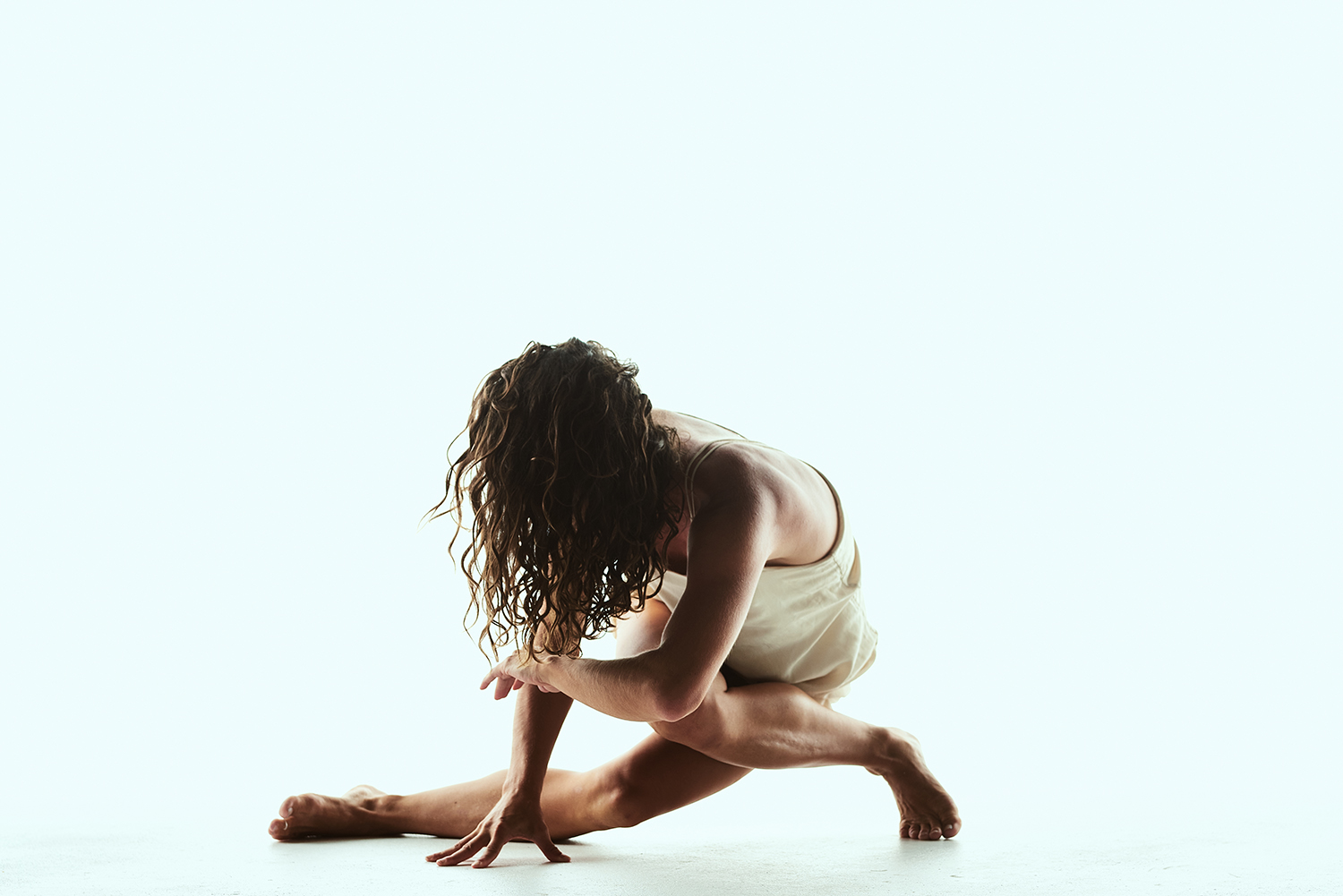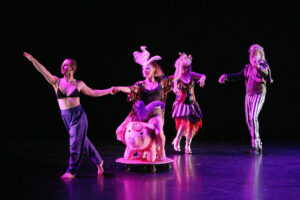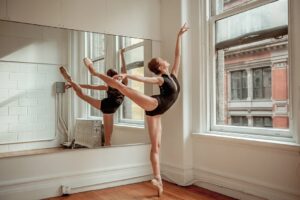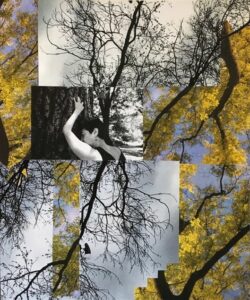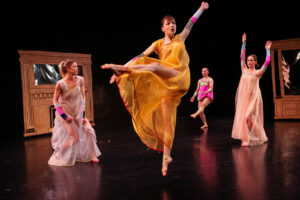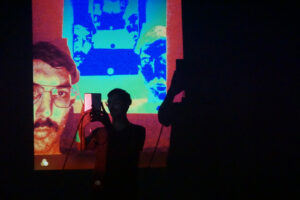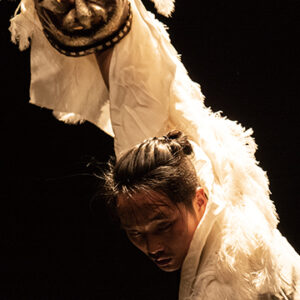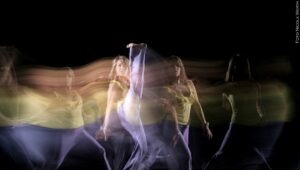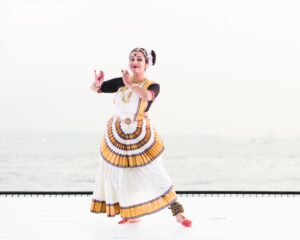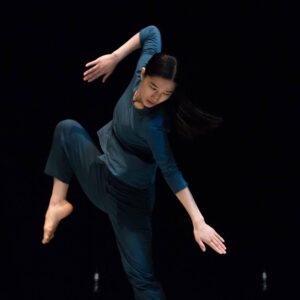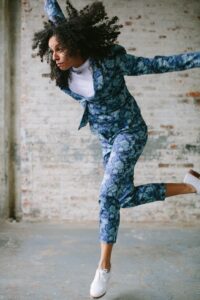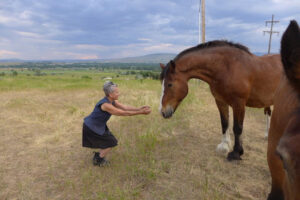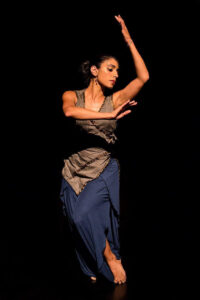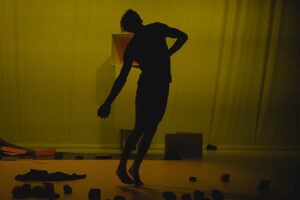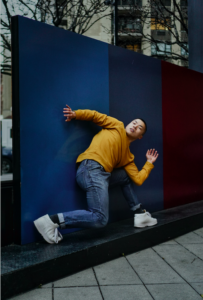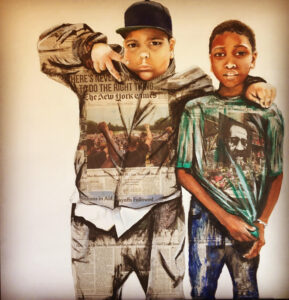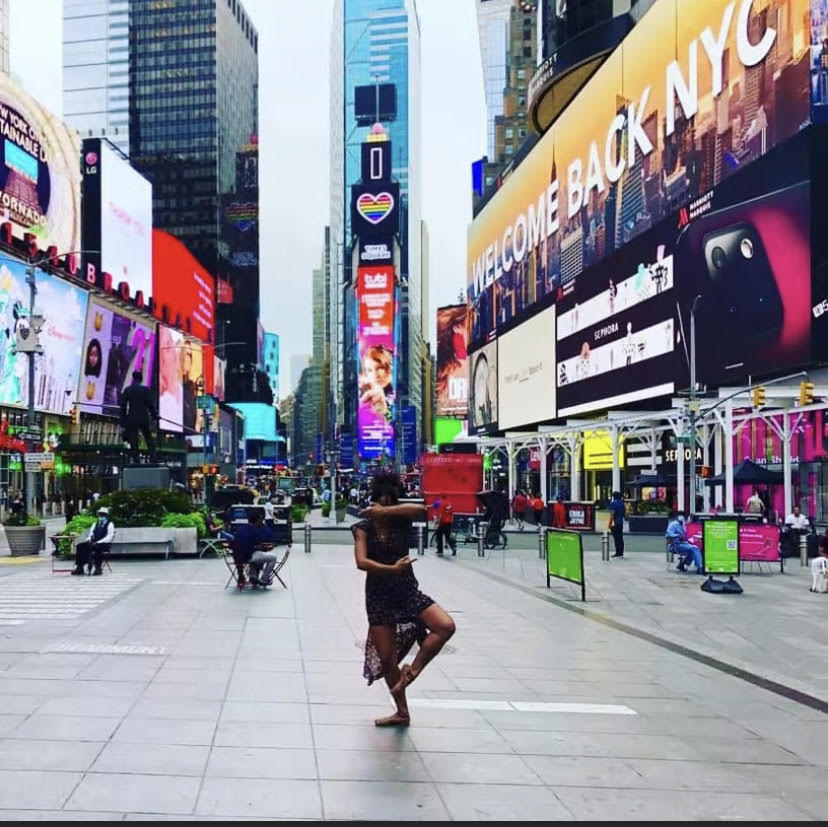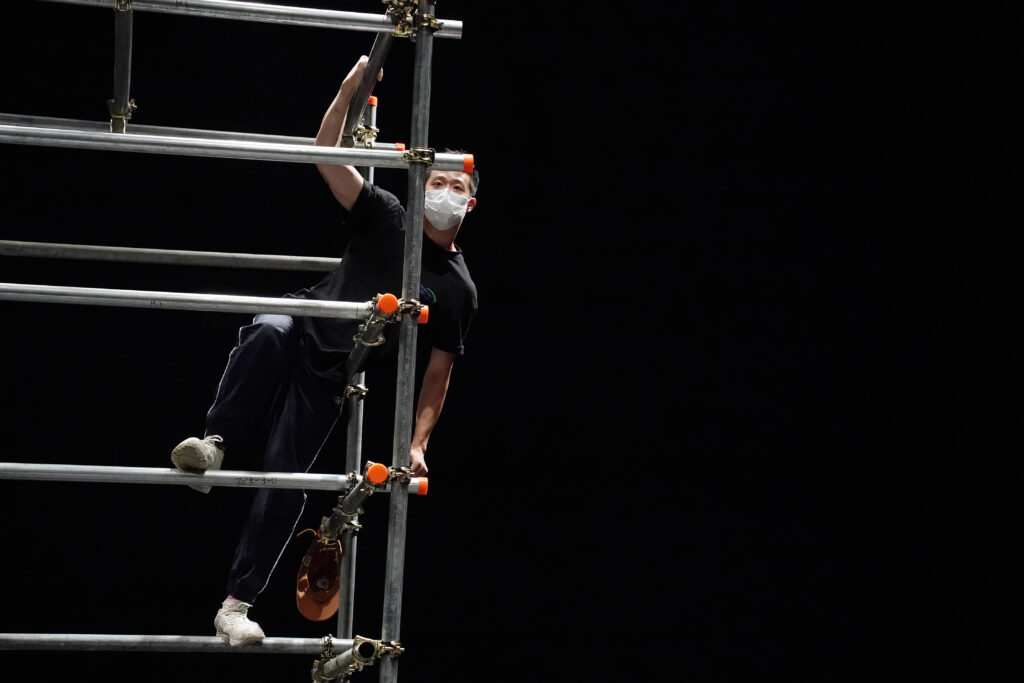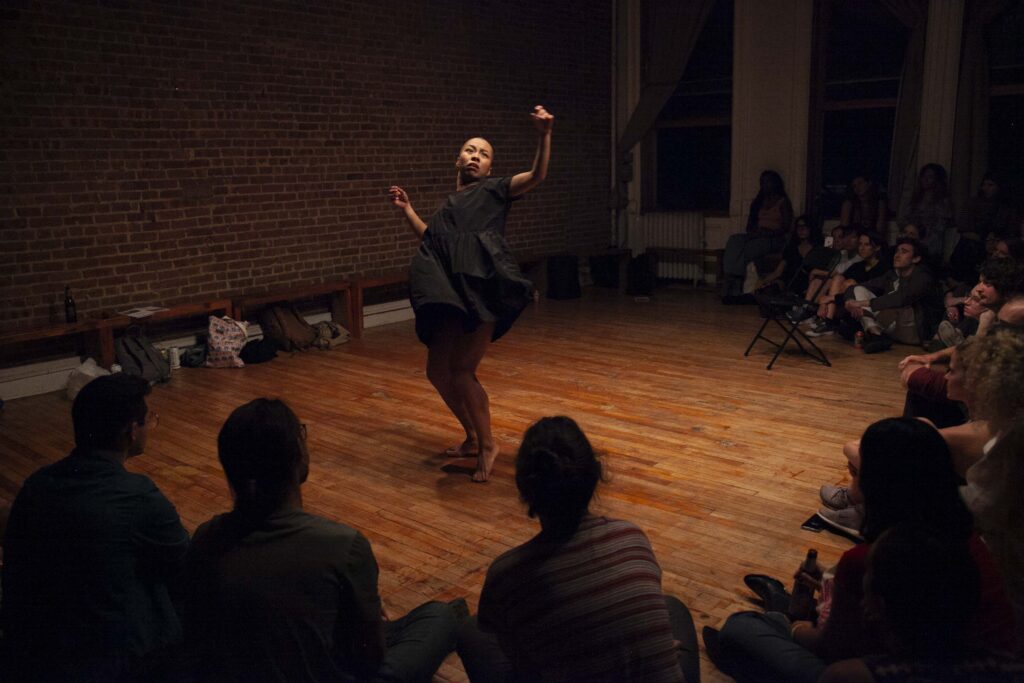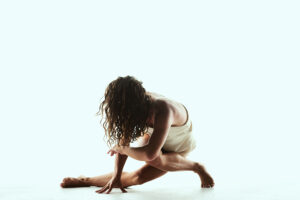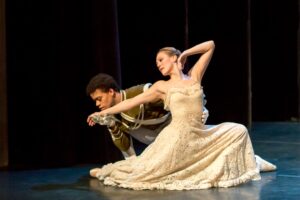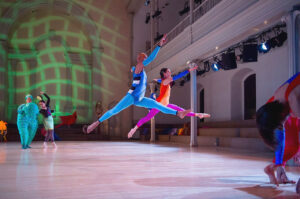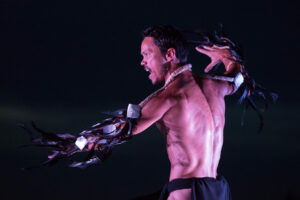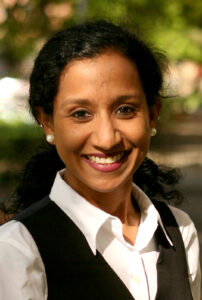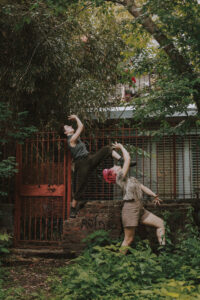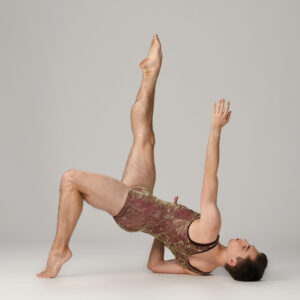Societal changes were in the works before the pandemic but the ‘pause’ has allowed time and space for deeper reflection, for increased activism, and for taking stock. Dancers are uniquely situated to emerge intact from the world pandemic, and perhaps will emerge stronger in ways unimaginable. The current thinking and developments in the dance field are striking and, despite the devastating impact of the pandemic on dance, there is always hope for the future.
This exposé, a series of discussions with dancers in the U.S. and abroad, seeks to discover how dancers and choreographers continue to dance through the pandemic and how they’re folding their current pursuits into their lives now and going forward. Interviewees include over 30 dance artists ages from 21 to 78 who talk about What will our dance lives look like going forward? What will we bring with us post-pandemic? Who will lead? How has the pandemic influenced choreography? In what ways has the Black Lives Matter movement affected artistic life?
Tackling Racism and Bipoc…. Now is the Time
The BLM statement on the National Dance Education Organization (NDEO) website reads in part: We acknowledge that many of the dance styles taught and practiced today are rooted in the history and current artistry of the Black diaspora…Black dancers, educators, and choreographers… are often marginalized in dance degree curricula, neglected in funding, left out of the textbooks, the course syllabus, the canon, and representation in leadership.
JoAnna Mendl Shaw writes, “Funders have turned their attention and funding toward artists of color. This is much deserved and long overdue.” Anthony Alterio comments, “People in academia have been trying for so long to get their institutions to take BIPOC matters seriously. Finally, we have a voice at the table.” “Why do tap dance and hip hop not get the respect they deserve among dance styles? Why is it so difficult to give the appropriate credit to movements and styles originated by Black culture?” asks Dolores Sanchez. Charles Scheland says “…dancers will be less willing to work on projects that do not reflect current progressive racial equity sentiments…white artistic viewpoints will have a harder time getting work.”
Michael Bryan Wang says, “My artistic self and identity I believe, encompasses all aspects of my humanity and existence, and as I continue to learn how to be a better person, my approach to art changes and grows, too. The racial uprising we witnessed also fueled my own anti-racist journey, and put this topic at the forefront which led to me seeing where I, a first generation Asian American, fall in the current levels of oppression and how I play a part in dismantling the systems that oppress us.” Anthony Aiu contributes “It has strengthened my desire to be even more truly authentically me as a mixed race, indigenous, native, LGBTQI artist and my resolve to share that with the world. My commitment is to give voice to underrepresented artists.”
The good news, according to a recent Gallup Poll (week of February 24, 2021) is that Americans are increasingly supportive of equal rights, specifically Gen Z Americans (those aged 18-23 in 2020) who, for instance, both support LGBT people and identify as LBGT at higher numbers than ever before. The liberalization of younger generations will affect and advance the dance field.
Day to Day Survival:
A typical dancer’s life is one of action, running from class to rehearsal to work interspersed with finding time to eat and sleep. At least it was. Dancers speak now about the classes they take at home on their computers. No commute. Life has slowed. But “virtual events tend to have technological glitches,” and “taking class from my small computer screen and in my small apartment,” opines Sarazina Stein, is not always scintillating. Larissa Gerszke, “holds on to my kitchen countertop as my makeshift barre…This practice is not totally inclusive of all aspects of my technical training…out of respect for the neighboring families below me, I do not pursue jumping.” Dolores Sanchez says, “Being a tap dancer in a New York apartment presented its challenges…Thankfully I was able to dance for an hour every other day without the neighbors complaining.” Says Mizuho Kappa, “…my small apartment, alley, parks and streets have become my new studios.” Sruthi Mohan speaks of “time on my hands to engage with my dance in ways I never had an opportunity to do so before” by studying with legendary Gurus in India many time zones away, waking at 3:30 am to take class with teachers who impart how “to control the slightest movements of the pupils.” Chelsea Ainsworth: “Slowing down, I have become more conscious of what and where I want to spend my energy.” “This shift allowed me to become a more multi-media and multi-dimensional artist,” shares Mizuho Kappa.
Many speak of trekking their cities, such as Yoshiko Chuma, who will walk up to five hours a day with her iPhone camera taking pictures of the New York City landscape. “Camera work is almost a dance.” JoAnna Mendl Shaw’s work with horses has become more intensified. Rebecca Stenn, Dylan Parry Smith and Janis Brenner have turned to painting and collage respectively. Dancers have time now to think about self-care, and what is really important to them.
And choreographing on Zoom and out of doors? Explains Michael Bryan Wang, “As a dancer with choreographer Megan Williams, we have been rehearsing virtually via Zoom, and in the warmer weather we have also met at some parks to rehearse outside. This alone influences and informs the work being made. Rather than being all together in a studio, we often now find ourselves apart in our own homes, or when we’re lucky, together but distanced and outside on unpredictable terrain.” Anthony Aiu says, “When creating new work…missing are the physical touch corrections made in person that cannot be done online, with a slight delay, with dancers in different time zones, and always needing to adjust the camera, for myself and my dancers, as there just isn’t enough room to perform the movements desired in a living room. Also, any kind of contact work or partnering is almost impossible. On the positive side, working virtually has required me to do much more preparation prior to classes and rehearsals, making sure I am clear and descriptive in my explanations and instructions, in order to keep a smooth flowing and a time efficient session. This is the sole aspect I will keep post-pandemic. Additionally you must be more aware of your space limitations and possibility of injury with the obstacles of furniture, ceiling fans, etc.”
Spending so much time in front of the computer has been tough for dancers, even those who are of an age where they grew up in front of one, but online classes connect friends from around the world and thrillingly there can be hundreds of dancers in one class. Hundreds of audience members watching virtual performances from all parts of the globe, too, is certainly a boon! Dance on camera has been part of the dance world for decades but as a niche. Now, filmed dance is front and center, and is assuredly here to stay and to grow. Even so, says Esmé Boyce, “Zoom pales in comparison to the joy I get from working in person with people I adore.”
To stay afloat financially freelance dancers have delivered food, taught class and rehearsed, worked dance gigs, have been awarded grants from such groups as Dance/NYC and Cultural Solidarity Fund, and collected Unemployment Insurance (UI) and Pandemic Emergency Unemployment Compensation (PEUC). Some interviewees are professors, such as Anthony Alterio, who work in a stable situation, but there is always “the concern that the arts are the first programs to get cut.” Dancers have moved back home with their families with the thought of returning to respective cities post-pandemic. Dance in the US, as a result of the pandemic, “may become decentralized,” says Esmé Boyce, “and there may be new dance hubs developing.”
Financial instability and lack of health care may force emerging artists out of the field. The field needs more protections, more opportunity, more activism. Comments Elad Schechter, “the major problem is that the young generation will turn to other fields as we’ve lost a full generation of dancers, dance students, young important minds in choreography, and mostly – the ability to trust human physical contact. Social distancing is unfortunately the last thing that will stay after this pandemic. As tragic as it sounds, in my eyes it is exactly the area of our interests as dancemakers.”
“Being a professional artist was hard enough pre-pandemic,” says Julia Bengtsson. The pandemic has exacerbated the current situation where dancers have left the field for established professions that offer more security or they are pursuing education or they are starting families. Also, this destabilization of our population due to the pandemic has caused artists to consider death. There have been older dance artists who have perished from Covid. “I have become kinder to myself and to others. Death has become much more present in people’s lives. When I ask my collaborators how they are doing each day I’m prepared to support them through anything,” says Julia Bengtsson.
“The pandemic has made me think philosophically about death since there have been so many people who have died. One year at my age is five years when I was young,” says Yoshiko Chuma. “That we have all been so close to our own mortality and that of the people we love, has thrown everything into perspective,” continues Esmé Boyce.
As author Bessel Van Der Kolk remarks in his groundbreaking book on trauma, The Body Keeps the Score, “The critical issue is reciprocity: being truly heard and seen by the people around us, feeling that we are held in someone else’s mind and heart. For our physiology to calm down, heal, and grow we need a visceral feeling of safety…Most human beings simply cannot tolerate being disengaged from others for any length of time.”
Douglas Dunn shares, “Occasionally this thought arises: I’m glad I’m not in young or mid-career, losing precious days of personal kinetic ecstasy and comradery with other dancers and with audience. But still, the meaning of daily living has for me been eviscerated.” Dancers are the ultimate vessels of engagement and community. We crave touch – from the gentle, encouraging touch of a correction in class to the physical entwinement of partnering in choreography, to the shared sympathetic movements common among dancers – when this is missing we feel isolated but our community is adept at bolstering one another and finding ways of communicating. We just need to keep going until we can be together working again. There is light at the end of the tunnel with the numbers of people vaccinated growing and theaters planning to open with limitations. The outside summer dance festivals are a go.
Some Silver Linings
According to Yoshiko Chuma, this time could be similar to the 60s and 70s when Grand Union and Fluxus were founded by 22-year-olds in response to the Viet Nam war. Of course, we’re not fighting a physical war, but we are at war with this virus and that is shaking us up. New ideas could emerge post-pandemic and flourish. “This might be the best ‘re-thinking’ opportunity for choreographers and dancers,” suggests Julie Pecquet, who goes on, “why are we surprised when the arts are the first to go when we’re not integrated in society? Ninety percent of society thinks of the arts (especially dance) as science fiction.” Douglas Dunn, comments, “Is it possible that the pandemic, in its strange way of pushing us around, may end up abetting progressive causes? So much has been revealed, how things work, and don’t work!” There are many directions the field could head. It will be exciting to follow the developments.
“A saturation of the field in the coming years is possible since we have been on hiatus for so long and younger artists will need to figure out new ways to show their work,” says Sébastien Provencher “Artists young and old will have to remain adaptable,” notes Elena Zahlmann. States Jessie Kardos “…there is a tremendous opportunity for artists to learn new skills and understand their personal values…the next generation of dance professionals will have new ideas of what their field should look like…” Gibney Dance is facilitating this ‘inevitable renaissance’ through Climate of Possibility – weekly mentorship, career development, guest artists discussions and cohort learning. Dance Artists’ National Collective (DANC) is another organization that fosters ethical practices for freelance dancers “who are working toward sustainable change across many fronts in our field…and gives me hope that these voices will be the next leaders in our field,” says Michael Bryan Wang. Mentioned in the last article, Dance in the Time of Covid, Part I, is Dance Rising, a visible dance force throughout NYC since Covid.
This pandemic year has compressed time. The use of digital platforms has been explored and utilized; the process is sped up. What may have taken several years to develop is taking one. “Young people use media and internet more actively than older adults. Thus, there may be a faster awareness by young people of what needs to change,” observes Ku Eun Hye, although Sruthi Mohan sees “older artists in their 70s and beyond engage with digital platforms with ease and professionalism…those who succeed will be those who adapt to changes with grace and fortitude.”
“True artists will continue to be creative… and find opportunity and creative response to limitations. It’s a compulsion. The resilient and lucky will remain,” says John-Mario Sevilla. “Age does not have a factor in the divine and primal artistic drive,” notes Lili Tewes. “You are a dancer because you need to be, you have no choice, it’s not a job, it’s a destiny,” proclaims Julie Pecquet. There is an inner necessity to dance. We do not know where it comes from. We have no other choice than to follow this compulsion. Gret Palucca (1902-1993).
Heidi Latsky remarks that “most of us who have lasted want to stay in the field one way or the other. Dance artists tend to stick it out. I keep going and am very passionate about it. But it’s up to the younger generation to keep things moving forward politically. Their task is to push us in ways that are difficult and challenging. Speak their minds. We want to acknowledge everyone who has not had a voice.” “Older artists will remain as advisors, influencers, inspirers but mostly as guides sharing their experiences with the younger generation,” says Sangeeta Yesley. JoAnna Mendl Shaw also says “I hope the pandemic guides young dancers to look beyond the studio for places to dance, places to bring their valuable embodied knowledge. This is an important nudge and reality check for the dance field as a whole.” Rebecca Stenn says, “Young dancers, pandemic or not, will always feel compelled, as the next generation, to lead, to discover, to push the edge of what the generation before them has done. And this is how it should be.”
To be a dancer is to enjoy the abandon of expressive movement but underlying this freedom is the struggle for recognition and support. Human nature hungers for certainty but in the dance field uncertainty is the profession’s byword. Dancers still brave cultural rejection. Despite the ongoing marginalization, the field, its artists, perseveres. Dancers have heart and this fortitude has and will carry the field forward. The desire by interviewees to share knowledge, to support one another, to find new directions for the field was overwhelming. That we create dances with everyone in a room working on a common goal, points out the fact that we are already poised for future collaboration.
It is the conclusion of this author, that the outpouring of response to my outreach is indicative of the need and desire for dancers to create a comeback, to regenerate and to thrive. A span of ages responded that the field will recover when everyone pulls together and assists one another. The respondents under 35 call for their dance elders, working in the field life-long, to share their knowledge, guide younger artists, keep creating but act as ballast. Elder dance artists note that the younger generation has a responsibility to push the field to be fully inclusive and to find ways to creatively bring the field forward. We will heal together and emerge with new possibilities. Many fine brains will be required to solve our pandemic induced problems. We will call on the sanguine voices and look to the organizations that will advocate for the entire dance field. We will make choices to accomplish our goals. We are ready to rally and apply our most creative selves to solve the issues we face as post-pandemic dance artists.
Catherine Tharin, dancer and choreographer, interviewed over 30 dance artists for this article and they include:
ARTISTS
- Ainsworth, Chelsea https://www.artsonsite.org/
- Alterio, Anthony www.anthonyalterio.com and www.excessiverealness.com
- Bengtsson, Julia http://www.juliabengtsson.com/
- Brenner, Janis: www.janisbrenner.com
- Boyce, Esmé www.esmeboycedance.com
- Casey, Kathy: www.montrealdanse.com and https://www.facebook.com/montrealdanse
- Dunn, Douglas: http://www.douglasdunndance.com/
- Chuma, Yoshiko: https://movementresearch.org/people/yoshiko-chuma and https://ychuma.wixsite.com/channel314
- Geigel, Tiffany: www.thebeautyoftiffany.com
- Gerszke, Larissa https://www.youtube.com/watch?v=Oo9VNsoAWp4
- Jun, Jaewoo: https://www.instagram.com/braveman_dance/ and http://www.youtube.com/channel/UCWJvz0W8SkvtjEoGlYFIS5A
- Kappa, Mizuho @mizup0i_kappa and https://www.instagram.com/mizup0i_kappa/ and https://mizuhokappa.wixsite.com/sohk-sml
- Kardos, Jessie: https://gibneydance.org/people/jessie-kardos/
- Kim, Jubin https://instagram.com/kim_jubin?igshid=tuasfvc06qxt
- Knaeble, Bernadette
- Ku, Eunhye: https://www.instagram.com/kueunhye3127/
- Latsky, Heidi: https://heidilatskydance.org/
- Mohan, Sruthi Video Links:. https://youtu.be/iBs16xii0Vwand https://youtu.be/jpjmV89cgT0 and https://youtu.be/BGXthXykEjs
- Pecquet, Julie http://www.juliepecquetproduction.com and one for kids http://www.kinder- events.hamburg
- Provencher, Sébastien: www.provenchersebastien.com
- Sanchez, Dolores @doloressanchez_@thedoloproject
- Schechter, Elad: https://aicf.org/artist/elad-schechter/ and https://catamon.com/en/about/dance-group-in-jerusalem/
- Scheland, Charles: https://www.charlesescheland.com/
- Sevilla, John-Mario: https://www.92y.org/instructor/john-mario-sevilla
- Shah, Parul: @parulshahdanceco kathakdance.com
- Shaw, JoAnna Mendl: https://www.equus-onsite.org/
- Stein, Sarazina: https://gohproductions.org/sarazina-joy-stein/
- Stenn, Rebecca: http://rebeccastenncompany.com/
- Tewes, Lili: https://www.lilitewes.com/
- Wang, Michael Bryan: https://www.michaelbryanwang.com/about
- Yesley, Sangeeta: https://creativeperformances.com/
- Zahlmann, Elena: https://nytb.org/about-nytb/company-bios/Elena-Zahlmann/
- Anthony Aiu: @teaomana IG and @teaomanaori: http://www.halawai.org/nypit-anthony-aiu.html
Catherine Tharin, former dancer with the Erick Hawkins Dance Company and senior adjunct professor of dance at Iona College, recently completed 15 years as the influential curator and programmer of dance and performance at the 92nd Street Y. She is now an independent dance curator, choreographer, teacher, writer and dancer.

